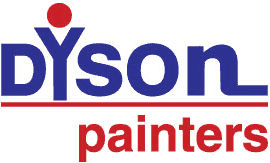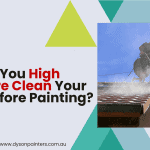High-pressure cleaning is an effective and efficient method for removing old paint, making it a popular choice for residential and commercial projects. This technique utilises a powerful stream of water to blast away layers of paint, dirt, and grime from surfaces. It is especially beneficial in preparing surfaces for a fresh coat of paint, ensuring better adhesion and a cleaner finish. For those seeking professional results, understanding the best practices for high-pressure cleaning can significantly impact the quality and efficiency of the job.
Benefits of Using High-Pressure Cleaning for Paint Removal
Speed and Efficiency Compared to Manual Methods
High-pressure washing offers a significant advantage over manual paint removal methods. The powerful water stream can cover large areas quickly, reducing the time and labour required for the job. This efficiency is especially beneficial for commercial projects where time constraints and large surface areas are common.
Cost-Effectiveness and Time-Saving
By speeding up the paint removal process, high-pressure cleaning also proves to be cost-effective. Less labour is needed, and the reduced time spent on the job translates to lower overall costs. For commercial clients, this means minimising downtime and disruptions, leading to a more efficient project timeline.
Minimal Chemical Use and Environmental Benefits
One of the standout benefits of pressure washing is its minimal reliance on chemicals. Traditional paint removal methods often involve harsh chemicals that can be harmful to the environment. High-pressure cleaning relies primarily on water, making it a more eco-friendly option. This reduces the environmental impact and contributes to a safer work environment for the cleaners and the property owners.
Tips to Keep in Mind
Know the Type of Surface You’re Working With
Before starting a high-pressure cleaning job, it is crucial to assess the type of surface you will be cleaning. Different materials, such as wood, concrete, or metal, require different pressure settings and techniques. For example, wooden surfaces are more susceptible to damage from high pressure and may need a gentler approach compared to concrete surfaces. Understanding the surface material helps in selecting the right pressure and nozzle to avoid damage and ensure effective paint removal.
Know the Type of Paint You Want to Remove
The type of paint you are dealing with also affects the cleaning process. Water-based paints typically come off more easily compared to oil-based paints, which may require higher pressure or additional methods for complete removal. Identifying the paint type can guide you in choosing the appropriate pressure washer settings and cleaning solutions if needed.
Select the Correct Pressure Washer
Choosing the right pressure washer is essential for efficient paint removal. Pressure washers come in various sizes and power levels, typically measured in pounds per square inch (PSI). For most paint removal tasks, a pressure washer with a PSI rating between 2000 and 3000 is effective. Higher PSI can be used for tougher jobs, but be cautious not to exceed the recommended pressure for the surface material to prevent damage.
Monitor the Pressure
While high-pressure cleaning can quickly remove old paint, it’s important to monitor and adjust the pressure to avoid damaging the surface. Start with a lower pressure and gradually increase it if necessary. Maintaining a consistent distance from the surface also helps in achieving uniform results and prevents uneven paint removal.
Never Forget About Safety
Safety should always be a priority when performing high-pressure cleaning. Wear protective gear such as goggles, gloves, and waterproof clothing to shield yourself from water spray and debris. Additionally, be mindful of the surrounding environment, especially when working with high pressure near electrical installations or delicate landscaping. Ensuring you and your workspace are safe will lead to a more effective and worry-free cleaning process.
Prepare the Surface
Effective preparation is crucial for successful paint removal. Start by cleaning the surface area to remove loose debris, dirt, and cobwebs. This helps the high-pressure cleaning process to be more effective and prevents the debris from interfering with paint removal. Next, protect any plants, windows, and other sensitive areas around the cleaning zone. Cover plants with plastic sheeting and use painter’s tape or plastic to shield windows and frames from the high-pressure spray. Proper preparation ensures the targeted surface is cleaned and minimises the risk of accidental damage.
Choose the Right Nozzle and Pressure Settings
Selecting the correct nozzle and adjusting the pressure settings are key to achieving efficient and effective paint removal. Nozzles come in various types and sizes, each suited for different tasks. For removing old paint, a fan or a turbo nozzle often works best. The fan nozzle provides a broad spray pattern, while the turbo one combines a rotating spray pattern with high pressure for stubborn paint. Adjust the pressure according to the surface material. Choosing the right nozzle and pressure settings ensures optimal results and prevents damage to the surface.
Best Practices for Efficient Paint Removal
High-Pressure Cleaning Techniques for Different Surfaces
Wood: Adjusting Pressure to Avoid Damage
Wood surfaces are sensitive and can easily be damaged by excessive pressure. Start with a lower pressure setting and gradually increase if necessary. Use a wide fan nozzle to evenly distribute the pressure and avoid concentrating it in one spot. Work in small sections and keep the nozzle moving to prevent gouging the wood. Regularly check the surface to ensure you’re not causing any damage and adjust the pressure settings as needed.
Metal: Using Specific Nozzles for Rust and Paint Removal
Metal surfaces often require a different approach, especially if rust is present. Use a turbo nozzle for its concentrated power, which effectively removes paint and rust. Adjust the pressure to a level that can clean the surface without causing dents or damage. Additionally, consider using a rust inhibitor after cleaning to prevent future corrosion. Consistent monitoring of the metal surface during the process helps achieve a thorough and clean result.
Concrete: Tips for Removing Stubborn Paint
Concrete surfaces are generally more durable and can handle higher pressure. For stubborn paint, a turbo or a rotary nozzle can be effective. Begin with a moderate pressure and increase as needed to tackle thicker layers of paint. If necessary, use a cleaning solution compatible with high-pressure cleaning to aid in paint removal. Maintain a consistent distance from the surface and avoid lingering too long in one spot to prevent surface etching.
Maintain Consistent Pressure and Distance
Maintaining a consistent pressure and distance from the surface is crucial for achieving uniform results. Inconsistent pressure can lead to uneven paint removal and potential damage to the surface. Keep the nozzle at a steady distance, typically around 12 to 18 inches from the surface, and move in overlapping strokes to ensure even coverage. This approach helps achieve a thorough and even removal of old paint.
Avoid Common Mistakes
Inspecting and Touching Up Any Missed Areas
After completing the high-pressure cleaning process, it’s essential to inspect the cleaned surface thoroughly. Look for areas where paint might still be present or where the cleaning might have missed spots. Use a detailed approach, checking corners, edges, and less accessible areas. If you find any missed spots, touch them up with the high-pressure cleaner, adjusting the pressure and nozzle as necessary. This step ensures a uniform surface, preparing it effectively for subsequent treatments or painting.
Cleaning and Storing the High-Pressure Cleaner
Proper maintenance of your high-pressure cleaner is crucial for its longevity and performance. After finishing the job, clean the equipment by flushing out any residual paint and debris from the nozzle and hoses. Follow the manufacturer’s instructions for cleaning and maintenance to prevent clogs and damage. Store it in a dry, sheltered place to protect it from weather elements and potential damage. Regular maintenance and proper storage will ensure your equipment remains in good working condition for future projects.
Disposal of Old Paint and Debris Responsibly
Responsible disposal of old paint and debris is vital for environmental protection and compliance with local regulations. Collect and dispose of the debris according to local waste management guidelines. Many communities have specific requirements for disposing of hazardous materials like old paint. Check with local authorities or waste disposal services to ensure you’re following proper disposal practices. By disposing of waste responsibly, you contribute to a cleaner environment and avoid potential legal issues.
Learn about 20 common mistakes to avoid when pressure washing. Read more here.
Call Us Now for Professional High-Pressure Cleaning Services
Alternative Methods and When to Use Them
Chemical Paint Removers
While high-pressure cleaning is effective, there are situations where chemical paint removers might be necessary. These products can dissolve old paint and make removal easier, especially for stubborn layers or surfaces where high-pressure washing is less effective. However, chemical paint removers have their drawbacks. They can be harsh, potentially damaging to surfaces or harmful to the environment. Proper ventilation and protective gear are essential when using these chemicals. Consider chemical removers when high-pressure cleaning alone cannot achieve the desired results.
Scraping and Sanding
For areas where high-pressure washing is insufficient, scraping and sanding are traditional methods that can be used to complement the cleaning process. Scraping can help remove remaining paint in crevices or stubborn spots while sanding smooths the surface and removes any residual paint. These methods are particularly useful on wooden surfaces or intricate details that high-pressure cleaning might not address completely. Combining scraping and sanding with pressure washing can achieve a more thorough paint removal.
Combining Methods for Best Results
In some cases, the best approach may involve a combination of methods. Start with high-pressure washing to remove the bulk of the paint, then use chemical removers or manual techniques like scraping and sanding to address any remaining paint. This multi-step process ensures a clean and prepared surface, especially for complex projects or surfaces with heavy paint buildup. By integrating different methods, you can achieve superior results and ensure your surface is well-prepared for further treatments or painting.
Frequently Asked Questions
What pressure setting is best for removing old paint?
For removing old paint, a pressure setting between 2000 and 3000 PSI is typically effective. Adjust the pressure based on the surface type: lower for delicate surfaces like wood, and higher for tougher surfaces like concrete.
Do I need to use a cleaning solution with high-pressure cleaning?
For most paint removal tasks, plain water is sufficient. However, stubborn paint or heavily soiled areas might benefit from a specialized cleaning solution. Always choose products compatible with your pressure washer and follow the manufacturer’s recommendations.
How do I prevent damage to the underlying surface?
To prevent damage, start with a lower pressure and gradually increase as needed. Maintain a consistent distance from the surface and use the appropriate nozzle to distribute pressure evenly.
Can I use high-pressure cleaning on all types of paint?
High-pressure cleaning works well on most paint types, but some, like oil-based paints, may require additional methods. Always test a small area first to ensure compatibility.
How often should I clean my high-pressure cleaner?
Clean your high-pressure cleaner after each use to remove debris and prevent clogs. Regular maintenance ensures optimal performance and prolongs the equipment’s lifespan.
How long should I wait before painting after high-pressure cleaning?
Allow the surface to dry completely before applying new paint. This can take anywhere from a few hours to a couple of days, depending on the weather and the surface material. Ensure the surface is dry and free of residual moisture to achieve the best paint adhesion.
Are professional services needed for high-pressure cleaning?
While DIY high-pressure cleaning is possible, professional services are recommended for optimal results. Professionals have the expertise, equipment, and techniques to handle various surfaces and paint types effectively. They ensure the job is done safely, efficiently, and with minimal risk of damage. For complex or large-scale projects, hiring professionals can save time and ensure a high-quality finish.
Call Experts for Residential and Commercial High-Pressure Cleaning Services
Whether you’re a business owner needing efficient commercial pressure cleaning or a homeowner looking to revitalise your exterior, our skilled team is here to deliver. Dyson Painters is one of the leading painting contractors in Hobart with more than 50 years of experience in providing comprehensive painting services. With advanced equipment and a wealth of experience, we ensure that old paint, grime, and debris are removed effectively, leaving your surfaces spotless and prepared for a fresh look.
Trust the leading experts in high-pressure cleaning in Hobart. Contact us at 0420-213-214 or email us at admin@dysonpainters.com.au to schedule your service and enjoy a cleaner, more vibrant property. Whether you are looking for pressure washing, airless spray painting, wallpaper painting, or plaster repairs, we have you covered for a wide range of services.





